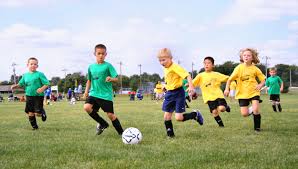 The majority of attention regarding heart health is directed toward older adults with risk factors that place them at higher risk of suffering a heart attack or stroke. But a recent statement from the American Heart Association (AHA) is now calling for more resources to be allocated for the cardiovascular health of children in the United States.
The majority of attention regarding heart health is directed toward older adults with risk factors that place them at higher risk of suffering a heart attack or stroke. But a recent statement from the American Heart Association (AHA) is now calling for more resources to be allocated for the cardiovascular health of children in the United States.
According to the AHA, a large proportion of US children don’t meet the standards that indicate ideal cardiovascular health, largely due to a lack of physical activity and poor food choices. In fact, barely half of all children are getting the recommended amount of daily physical activity. Worse yet, less than 1 percent of children ages 2 to 19 ate at least 4 of the 5 food components necessary for a healthy diet!
Defining Ideal Cardiovascular Health in Children
According to the AHA, children qualify as having strong cardiovascular health if they get at least one hour of physical activity per day, have never tried or smoked a whole cigarette, show a BMI less than the 85th percentile, and eat a healthy diet in at least four of five categories. Children who meet these metrics have a much higher likelihood of benefiting from strong heart health through the rest of their lives. As the AHA says, “Instead of taking a wait-and-see approach by treating disease later in adulthood, we should help children maintain the standards of ideal cardiovascular health that most children are born with.”
Moving Forward
The children of our country need every opportunity to embrace steady heart health so they do not enter adulthood already predisposed for complicated and deadly diseases. The AHA study’s co-author, Donald Lloyd-Jones, MD, explained, “Pediatricians are our most important partners going forward. They have the power, along with the schools and public policy, to really help reverse this epidemic. If we can improve eating patterns and increase physical activity among children, we can dramatically alter their life course.”
Supporting child and adolescent health will require teamwork, with the best experts in the industry leading the way.

 Patient Login
Patient Login